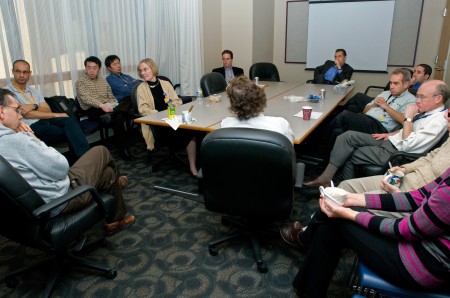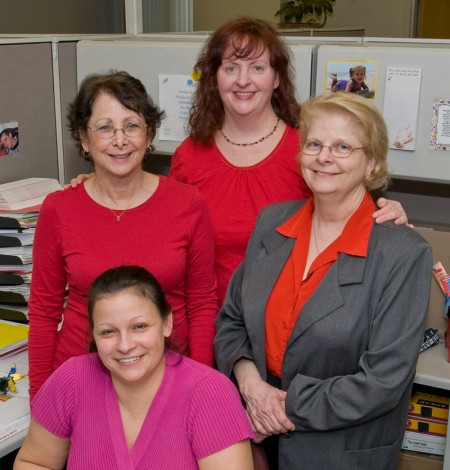
Neuropathology Faculty Discuss Ongoing Research
The Neuropathology Division is made up of a diverse group of clinicians and scientists focused on understanding and treating diseases of the nervous system. The 17 faculty work on a broad range of conditions, including Alzheimer’s disease, ALS (Lou Gehrig’s disease), and other neurodegenerative diseases, brain tumors, traumatic brain injury, autism, and schizophrenia. The faculty are assisted by two clinical fellows, eleven research fellows, thirteen technicians, six graduate students, and five administrative staff. The Division is centered on the 4th floor of the Ross Research Building, and this location includes the Brain Resource Center and all of the laboratories dedicated to research on neurodegenerative diseases and other non-neoplastic conditions. Surgical Neuropathology is located on the 7th floor of the Pathology Building, while the Brain Tumor Research Group is housed on the 4th floor of the Smith Building.
The Division was founded by Dr. Don Price, who remains active as an emeritus professor. The research group he founded has made numerous fundamental contributions to our understanding of the cellular and molecular basis of Alzheimer’s disease, Parkinson’s disease, ALS, and other conditions. Drs. Wong, Li and others have been active in developing transgenic mouse disease models which are now being used to test and optimize new therapies for these devastating conditions. In parallel to these murine studies, Drs. Troncoso, Pletnikova, Martin, and Crain have played a major role in defining the changes in human brains donated by patients who suffered from these diseases. By comparing human and mouse tissues, the researchers and physicians in our Division make sure that our pre-clinical therapeutic models faithfully recapitulate the diseases being studied.
This general approach is now being extended to other diseases such as traumatic brain injury (Drs. Koliatsos, Li, Troncoso, and Crain), as well as autism and schizophrenia (Drs. Savonenko, Melnikova, Wong, and Li). Researchers in the Division continue to use new approaches to study disease and develop improved therapies. Dr. Martin has begun to complement morphological and molecular studies of human and murine tissues with functional electrophysiology, and Dr. Savonenko directs a growing group of researchers studying behavioral changes in animal models of Alzheimer’s disease, schizophrenia, and autism. Finally, Dr. Koliatsos has helped to pioneer the use of embryonic stem cells as potential therapeutic agents, and is also now using iPS cells to model Alzheimer’s disease. He also plays a leading role in the rapidly growing area of traumatic brain injury.
Brain tumors represent another major research and clinical focus in the Division. Drs. Eberhart, Bar, Burger, and Rodriguez all have active research programs focused on improving the diagnosis and treatment of these frequently debilitating or fatal neoplasms. Recent studies in the Eberhart and Bar laboratories have focused on how developmental pathways such as Hedgehog and Notch promote a stem-like phenotype in brain tumors, and their work has been used to help justify the initiation of clinical trials testing Notch and Hedgehog inhibitors. Dr. Rodriguez, who has recently joined the Division from the Mayo Clinic, has a long-term interest in pediatric low-grade gliomas. He works closely with Dr. Burger, who is a world-renowned expert in diagnostic neuropathology, and who has described several new types of brain tumor during his career. For more information on the clinical surgical neuropathology service, please refer to the recent blog post by Dr. Burger.
Charles G. Eberhart, M.D., Ph.D.
Director of Neuropathology
Associate Professor of Pathology
